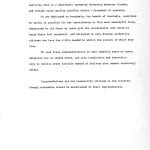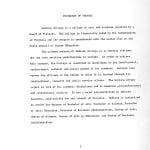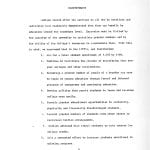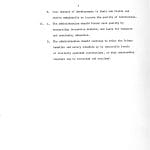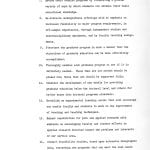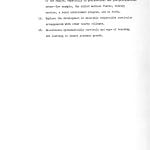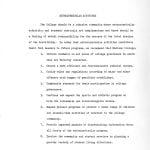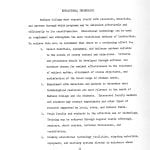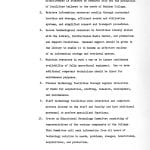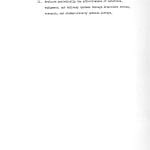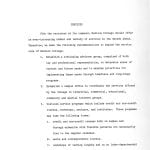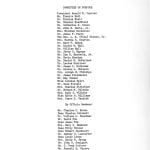Post Author: Amanda Castellano
During Carrier’s first year as acting president, he immediately formed a Purpose Committee, which was headed by Carrier and included board members, administrators, faculty, staff, students, alumni, local leaders, and a legislator. The Purpose Committee’s function was to look at the future of the institution and decide what direction it needed to take, as well as recommend programs and goals that would meet these needs. Dr. Carrier outlined the findings of the Purpose Committee in his inauguration speech (for more information, see New Directions: Carrier’s Inaugural Address).
The Purpose Committee formulated a new statement of purpose for Madison College. (See below for the full document) A statement of purpose is important because it lays out the basic goals of an institution and is an evaluation tool by which every other program can be evaluated. It identifies Madison College’s primary purpose as “develop[ing] citizens who can make positive contributions to society”. In order to achieve this goal, Madison College is “committed to excellence in the intellectual, professional, cultural, and social growth of its students”. The College “also serves the citizens of the region in which it is located through its instructional, research, and public service efforts”. The statement of purpose then goes on to say that Madison College offers majors in most academic areas and offers pre-professional and professional programs. It also states that the College “has a major responsibility to educate teachers, particularly for the schools of Virginia”. It also states that the College is authorized to confer numerous bachelor and masters degrees. The most important part of the statement of purpose is that it states Madison College’s commitment to offering an all-around experience to its students and aims to produce students who can be contributors to society.
The report addressed changes that needed to be made in the areas of the constituency, curricula, extracurricular activities, educational technology, and services. Important constituency goals that were identified were increasing the total enrollment to 7,000 by 1980 and continuing to “recruit teachers with imaginative, innovative minds, who are concerned more with freedom to explore than with security”. Important curricula changes that needed to occur were expanding the undergraduate and graduate programs, establishing an academic advisement center, and a complete reevaluation of the undergraduate and graduate course offerings. Madison also needed to expand extracurricular activities, but especially in the sports programs. They also wanted to involve students in all levels of the government of the college. There was also a need to expand the services offered to students.
These findings by the Purpose Committee, as well as the Master Plan Carrier lays out in his inaugural address, helped solidify the purpose of Madison College, identified key areas and issues that needed to be addressed, and recommended ideas that would improve Madison College and expand it into a regional university.
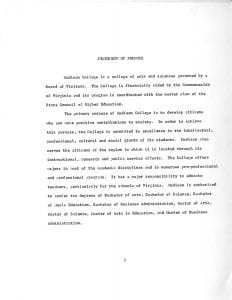
Works Cited
“Report of the Committee on Purpose.” Madison College. February, 1972. JMU Special Collections.



